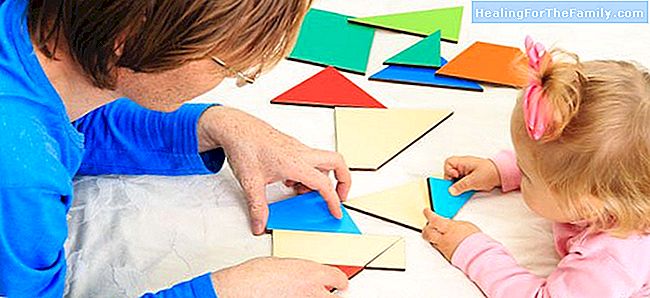Benefits of playing tangram for children
Tangram is an ancient Chinese game that consists of forming shapes of animals or things from geometric figures: squares, parallelograms and triangles. In short, it is a puzzle that, according to experts, improves the intellectual performance of the user, whether adult or child. The exact origin of t
Tangram is an ancient Chinese game that consists of forming shapes of animals or things from geometric figures: squares, parallelograms and triangles. In short, it is a puzzle that, according to experts, improves the intellectual performance of the user, whether adult or child.
The exact origin of the game is unknown but the legend tells that a servant of a former Chinese emperor, had a ceramic mosaic in his hands and fell to the ground breaking into pieces. The servant tried to fix it and could not, but he realized that he could form other figures with the pieces. This game for children and adults is very beneficial for children. Learn about the advantages of playing tangram for children. Ventajas 7 advantages of playing tangram for children
There are many and varied ways to play with the tangram: forming invented figures, following patterns to recreate established figures, use few or larger pieces,

1. Improve mathematical knowledge:
children they learn without realizing concepts of geometry, they know the different figures like the rhomboid or the triangle. It even improves the capacity of spatial conception and learning in mathematics in general. 2. Encourages fine motor skills:
Another benefit of playing tangram for children is that it improves their motor skills because children have to join some pieces with others. Mejo 3. It improves the visual-spatial capacity: we can use the tangram to form two figures and make the child think about where they would look if we rotate them, it is a task of mental rotation that improves the visual and spatial capacity of the child. Desarrol 4. Develops logic skills:
encourages children to improve their capacity for deduction and logic, since they have to face solving a problem, which is ultimately how to form a certain shape with a series of geometric figures. 5. It improves the child's attention:
to be solved, the tangram needs high doses of concentration. The child must pay attention to put each figure in its place. Est 6. Stimulates the creativity of the child: the tangram allows the child himself to create a form from triangles or parallelograms, therefore, he can exercise his fantasy to create his own design. F 7. It promotes the capacity for effort:
the child has to achieve his goal, which is to assemble the puzzle, he has to work to achieve it and for that, he will need to make an effort.












